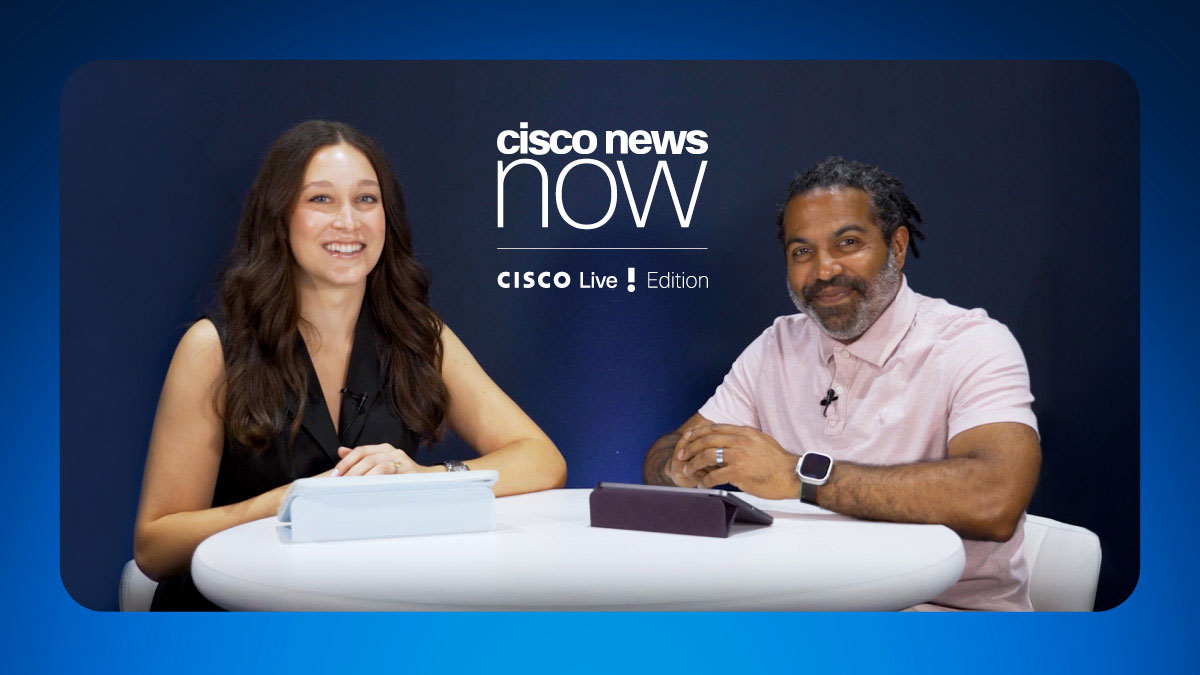SAN JOSE, Calif., October 29, 2001 - Cisco Systems, Inc. today announced 12 new Internet Protocol (IP) telephony products that utilize a converged voice, video and data network to lower total cost of network ownership (TCO) and maximize return on investment (ROI) for enterprise customers including Cray Inc. and the H.B. Fuller Company.
The variety of new call processing and infrastructure products complement Cisco's broad and mature portfolio of voice offerings. On the software side, Cisco is announcing the Cisco Conference Connection, Cisco CallManager 3.2, Cisco Emergency Responder (911 service), Media Gateway Control Protocol (MGCP) support for Cisco 2600/3600 routers, Cisco Internet Service Node (ISN) 1.0, and the Cisco IP Contact Center Bundle. New infrastructure products include the Cisco VG248 Analog Phone Gateway, Cisco Catalyst 4200 with Systems Network Architecture (SNA) and Internetwork Packet Exchange (IPX), Survivable/Standby Remote Site Telephony (SRST) for the Cisco 7200 router, High Density Analog Voice/Fax Network Modules (NM-HDA), the Advanced Integration Modules (AIM) VOICE-30, and the IP Phone Expansion Module 7914. All of these products are enabled by Cisco AVVID (Architecture for Voice, Video and Integrated Data) -- an enterprise architecture that provides an intelligent network infrastructure for today's Internet business solutions.
H.B. Fuller Maximizing their ROI
Lower total cost of network ownership and positive return on investment are the two key business drivers for companies considering a migration to an IP telephony system. For the H.B. Fuller Company, a worldwide manufacturer and marketer of specialty chemicals, their switch from a Private Branch Exchange (PBX)-based telephony system to a Cisco converged IP telephony network is expected to result in cost savings of approximately $2 million over five years. With a roll out of 3,000 IP phones, and other Cisco IP telephony products like Cisco Unity unified messaging, the company has estimated a pay back on their investment ranging from immediate in some cases to 36 months -- depending on specific office locations. "We view Cisco's IP telephony solution as a real ROI winner," said Kevin Wetzel, manager of Global Network Services for H.B. Fuller. "The cost savings numbers we arrived at through our own analysis are very conservative. As a company, we are continually looking to drive costs out of our operations and improve communications throughout our worldwide locations. IP telephony has proven to be a better economic solution than traditional telephony for us to accomplish that objective."
Wetzel says the primary ROI drivers are the reduction of $60,000 in annual network administration and training costs, significant annual savings in inter-office calling charges, a $52,000 reduction in wiring costs at one site alone, and the elimination of 85 percent of costs associated with PBX upgrades. In addition, Wetzel said H.B. Fuller will save $37,000 annually in moves, adds and changes costs.
Cray Inc. Computer Receives Pay Back on Investment in 7 Months
For Cray Inc., a global market leader in high-end supercomputers, their deployment of 650 IP phones generated a seven month payback on investment and a 33 percent productivity increase in network support. "We were able to save $30,000 in our first year in costs we would have absorbed due to moves, adds and changes with our old PBX system," said Tom Stephens, manager of network infrastructure for Cray Inc. "Based on our calling patterns, we now save $25,000 annually in inter-office calling costs using our new converged network. When we compared the cost of Cisco's telephony and data gear to the cost of selecting a PBX, the up front costs were equal. But when you factor in the additional cost and productivity benefits that the Cisco converged network provides us, the business decision to move to Cisco's IP telephony solution became very clear."
New Cisco Call Processing Enhancements
Cisco has added a wide variety of call processing enhancements to its product portfolio. For example, the Cisco Emergency Responder software application works with Cisco CallManager to ensure that calls placed from Cisco IP Phones in campus environments are routed to an appropriate public safety answering point (PSAP), and that the location of a caller is accurately provided to a PSAP. Other features include an automated location-tracking database, real-time alerts to on-site personnel, configuration auditing, and enhanced reporting functions. The reduction in manual processes associated with phone moves improves campus safety and security, reduces the number of updates to location database service providers, and saves customers time and money.
New features in Cisco CallManager version 3.2 - the call processing engine that drives Cisco's IP telephony solution -- include localization of client interfaces adding 10 new languages, station-to-station intercom, drop last conference party, certification of virus checking and certification of Cisco Intrusion Detection System Host Sensor software.
Enhancements in contact center products can be found in Cisco ISN 1.0 and the Cisco IPCC Bundle. ISN 1.0 provides web-based Interactive Voice Response (IVR) capabilities that are combined with IP routing and transfer services for both IP and traditional telephony networks. The ISN delivers these services to service providers and large enterprise customers yielding significant cost savings by reusing their data infrastructure to distribute IVR call queues more efficiently anywhere on their network. The Cisco IPCC Bundle provides a pre-configured contact routing and queuing solution for small to mid-sized contact centers, help desks, and informal call centers. The Cisco IPCC Bundle utilizes the Cisco CallManager platform to provide integrated Automatic Call Distribution functionality and advanced skills-based routing that allow companies to deploy new contact center offerings in less than a week.
Cisco has also introduced its first audio conferencing solution, providing enterprises with immediate savings versus outsourced solutions by utilizing their single voice, data and video network to cut connection costs. The Cisco Conference Connection gives employees the ability to schedule meetings at the touch of a button on their Cisco IP Phone. The phone serves as the entry point to an intuitive Web-based conference scheduler that allows employees to schedule and attend meetings without having to remember conference identification numbers.
In addition to audio conferencing, the Cisco IP Phone 7960 can now provide 14 additional line appearances and speed dial functionality with the addition of the Cisco IP Phone Expansion Module 7914. Using two expansion modules gives users up to 34 lines, 33 speed dials, or a combination of line appearances and speed dial buttons. Illuminated multi-color buttons for line appearances and a large LCD display provide the user instant identification of line status. Gateways to Customer Profitability
On the infrastructure side, Cisco has increased the features in its line of voice-enabled gateways ranging from its 2600-3600 Series routers to the Cisco 7200 Series router providing IP telephony capabilities for small, medium and enterprise-class businesses. The Cisco Catalyst 4200 SNA/IPX Access Gateway Switch lowers the TCO for branch offices by deploying converged IP voice, video and data routing and switching functions via a single two-rack unit box. New in the Catalyst 4200 are the SNA and IPX protocols that enable bank branch offices to run their automated teller machines.
The Cisco VG248 Analog Phone Gateway is a high-density gateway that allows companies to protect their investments in analog phones, fax machines, modems, voice-mail systems, and speakerphones as they migrate to a converged enterprise voice system running on the Cisco CallManager. It offers 48 fully featured analog phone lines to be used as extensions to the Cisco CallManager system in a compact 19-inch rack-mount chassis. Branch offices can also protect their investment in legacy equipment by deploying the Cisco 2600/3600 Series multi-service router platforms as Media Gateway Control Protocol (MGCP) voice gateways. With the addition of the MGCP features including forward, transfer, conference and hold, customers can use the 2600/3600 routers already deployed in their networks as gateways for new world telephony applications.
Extending the Survivable/Standby Remote Site Telephony (SRST) feature to the Cisco 7200 Series router enables companies deploying large-scale AVVID networks with advanced Quality of Service (QOS) features, high-speed packet processing and voice gateway capabilities all in a three-rack unit compact router. With the new SRST feature, an enterprise can use a Cisco 7200 to deploy an IP telephony network with up to 500 phones per site and dial tone insurance in the event of a wide area network failure. This allows customers to use the 7200 series routers already deployed in their networks as gateways for new world telephony applications.
The High Density Analog Voice/Fax Network Modules (NM-HDA) provide enterprises and their branch offices as well as service providers with the ability to directly connect high densities of analog Public Switched Telephone Network (PSTN) traffic and legacy analog telephony equipment like PBXs, fax machines and key systems to existing Cisco 2600/3600 series routers. This gives customers the advantage to utilize telephony toll bypass, new IP telephony applications and full voice gateway integration. The newly introduced Voice Advanced Integration Module (AIM-VOICE-30) provides customers with the opportunity to deploy up to 30 additional voice/fax channels without the need for a network module in the Cisco 2600 and 3660.
Base List Pricing and Availability
Products available today include: Catalyst 4200 SNA/IPX, $12,995; Conference Connection, $21,000; IP Phone Expansion Module 7914, $428; AIM-VOICE-30, $4,000; VG248 Analog Phone Gateway, $11,995; MGCP support for Cisco 2600/3600 routers, free Cisco IOS upgrade; SRST with Cisco 7200 routers, $16,250; ISN 1.0, $7,000 plus $1,000 per port; and the IPCC Bundle, $55,000. Emergency Responder, available Dec. 7, starts at $5,995. The High Density Analog Voice/Fax Network Modules, available Dec. 28, start at $3,900 and Cisco CallManager 3.2, available Dec. 31, is a free software upgrade for CallManager 3.1 customers and $5,995 for new installations. Including Cisco Service and Support when purchasing Cisco IP telephony solutions, customers can confidently deploy a converged network architecture using Cisco expertise, experience and resources. For additional product information, please visit http://www.cisco.com/warp/public/779/largeent/avvid/products/



